Unique Chinchorro Burial Tradition For All And Ancient Egyptians Who Mummified Kings And Nobles Only
A. Sutherland - AncientPages.com - Mummies have long fascinated the world. Mummification is the great ancient tradition and has been a worldwide practice for over 7,000 years.
How were the first techniques of mummification discovered?
The internal organs were removed through the incision and then cleaned, dried, wrapped and placed in four canopic jars. Image via History In An Hour
Millennia ago, in the Middle East, the head were separated from the rest of the dead body and facial features of the dead were modeled on the skull.
It was not mummification as we know it today from archaeological evidence but it was a desire to preserve the human remains and facial features.
Over the centuries, numerous beliefs and funeral practices in many cultures were combined to preserve the posthumous existence of the dead.
In his book "The Golden Branch," James George Fraser wrote that in many cultures, there was no doubt that the aging of the body and its postmortem decay can harmfully affect the soul that inhabits it. It was therefore necessary to prevent changes that could lead to the death of the soul.
The Chinchorro culture that lived on the coast of present day northern Chile and southern Peru, created the earliest known mummies.
A Chinchorro mummy - at San Miguel de Azapa Museum in Arica, Chile; Arica is often referred to as the driest place on Earth, but locals say that is changing. Photograph: Vivien Standen/Washington Post
They preserved all their dead using elaborate techniques. The dead remained with the living and symbolized as the link between the dead and the living.
Recent research indicates that the tradition of embalming in Egypt is much older than previously thought and can match the age of Chinchorro culture.
The Egyptians constantly refined their mummification process, and by the New Kingdom period, they had perfected their techniques, so even today Roman Catholic Church follows them when preserving the bodies of deceased popes.
See also:
Mystery Of The Chinchorro Civilization And The World’s Oldest Mummies
Canopic Jars: Funerary Tradition Of Ancient Egyptians And Their Beliefs In Afterlife
Viking Burial Rituals: High Ancient Funeral Pyre Reflected High Social Status
To the ancient Egyptians, death was the next step in a great process of continuation of life – afterlife. But to participate in it, the body had to be properly preserved.
The Egyptians were wrapping their dead in linen as early as c.3400 BC, with linen impregnated with resin or sometimes with plaster to preserve the contours of the body. Around 2600 BC, they began to remove the internal organs (except for the kidneys) to prevent decomposition. The brain, which was never preserved, was removed through the nose with an instrument that looked like a hooked metal rod.
For the next three millennia, the Egyptians refined and perfected their techniques and by New Kingdom times, about 1570-1070 BC, they became the world’s most skilled and famous practitioners of mummification.
It was long believed that the Chinchorro people of Chile preserved bodies before the Egyptians. First, now researchers have been able to analyze ancient Egyptian graves at Mostagedda, Badari and Hierakonpolis and the results indicate that buried bodies were subjected to embalming treatments before being deposited in the grave.
Dating of these burials to the fifth millennium BC makes them the contemporaries of the Chinchorro mummy of South America.
However, the Chinchorro burial practices were unique in many ways.
Bernardo Arriaza, an expert on the mummies, which were first discovered in the Atacama desert in 1917, wrote that “…whereas the Egyptians considered only kings and other exalted citizens worthy of mummification, the Chinchorro accorded everyone in the community, regardless of age or status, this sacred rite…”.
Without pottery farming and literacy, the Chinchorro people were considered as primitive, but interestingly, they possessed complex mummification techniques that confirm they were a highly sophisticated culture.
From c.6000 BC, the Chinchorro began to 'rebuild' their dead, with bodies carefully removed flesh and the skin, brain and internal organs removed. The bones were dried with hot ashes before the whole lot was then reassembled using twigs for reinforcement bound tightly with reeds.
Finally, a layer of ash paste was applied over the body, a clay mask used to cover the face and a wig made of human hair was placed on the head.
At first, only infants and children, decorated with vibrant colors and diverse clay figurines. At its peak around 3000 BC, Chinchorro mummified men, women, and children of all ages and in the final days of this culture, the mummies bore only mud masks. The mummies were apparently not buried but were stood upright in a visible location in the camp, perhaps to indicate the group’s lineage from a common ancestor.
In addition, not all members of Chinchorro bands were mummified; some were buried in simple graves. Such graves have been found on elevated terraces and containing one or more individuals who may have been family groups.
Written by – A. Sutherland AncientPages.com Staff Writer
Copyright © AncientPages.com All rights reserved. This material may not be published, broadcast, rewritten or redistributed in whole or part without the express written permission of AncientPages.com
Expand for referencesReferences:
Andrews C. Egyptian Mummies: Revised Edition
Stein R. L. Stein P. Anthropology of Religion, Magic, and Witchcraft
Sciencing - In Ancient Egypt, What Did They Put in a Mummy's Stomach?
More From Ancient Pages
-
 Could Aztec Innovative ‘Chinampas’ – ‘Floating Islands’ Help Modern Farmers?
Archaeology | Nov 4, 2019
Could Aztec Innovative ‘Chinampas’ – ‘Floating Islands’ Help Modern Farmers?
Archaeology | Nov 4, 2019 -
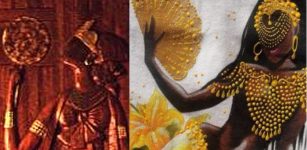 Oshun Goddess Of Yoruba People Who Brings All Things That Make Life Worth Living
African Mythology | Mar 29, 2019
Oshun Goddess Of Yoruba People Who Brings All Things That Make Life Worth Living
African Mythology | Mar 29, 2019 -
 Grave Of Scythian Amazon Warrior Wearing A Golden Ceremonial Headdress Discovered In Voronezh, Russia
Archaeology | Dec 8, 2019
Grave Of Scythian Amazon Warrior Wearing A Golden Ceremonial Headdress Discovered In Voronezh, Russia
Archaeology | Dec 8, 2019 -
 Humans Spread The Black Death – Not Rats – Scientists Say
Archaeology | Feb 7, 2018
Humans Spread The Black Death – Not Rats – Scientists Say
Archaeology | Feb 7, 2018 -
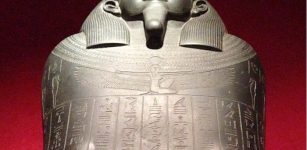 King Tabnit’s Sarcophagus And Its Surprising Forever-Lost Secret
Featured Stories | Jul 30, 2023
King Tabnit’s Sarcophagus And Its Surprising Forever-Lost Secret
Featured Stories | Jul 30, 2023 -
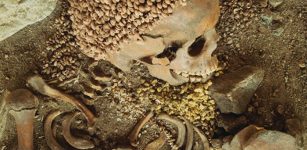 Broken Pebbles In Arene Candide Cave Shed New Light On Ancient Burial Practices
Archaeology | Mar 7, 2017
Broken Pebbles In Arene Candide Cave Shed New Light On Ancient Burial Practices
Archaeology | Mar 7, 2017 -
 Message In A Bottle Thrown Overboard In Germany 132 Years Ago Was Found In Australia
Archaeology | Mar 8, 2018
Message In A Bottle Thrown Overboard In Germany 132 Years Ago Was Found In Australia
Archaeology | Mar 8, 2018 -
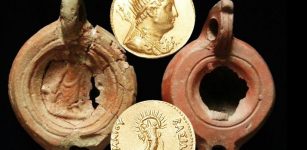 Greco-Roman Bath Complex, Coin Depicting King Ptolemy III And Other Artifacts Found In Egypt’s Gharbia Province
Archaeology | May 26, 2018
Greco-Roman Bath Complex, Coin Depicting King Ptolemy III And Other Artifacts Found In Egypt’s Gharbia Province
Archaeology | May 26, 2018 -
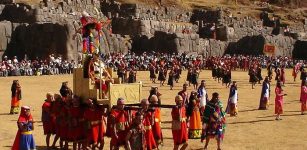 What Was Inti Raymi And Why Was It Celebrated By Inca?
Ancient History Facts | Dec 16, 2017
What Was Inti Raymi And Why Was It Celebrated By Inca?
Ancient History Facts | Dec 16, 2017 -
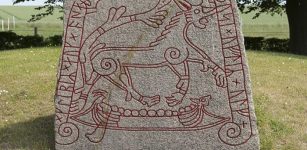 Naglfar Nail-Ship Carries Demonic Forces To Ragnarok In Norse Beliefs
Featured Stories | Aug 10, 2020
Naglfar Nail-Ship Carries Demonic Forces To Ragnarok In Norse Beliefs
Featured Stories | Aug 10, 2020 -
 Secret Tunnels Used By Knights Templar Leading To The Treasure Tower – Discovered
Archaeology | Oct 29, 2019
Secret Tunnels Used By Knights Templar Leading To The Treasure Tower – Discovered
Archaeology | Oct 29, 2019 -
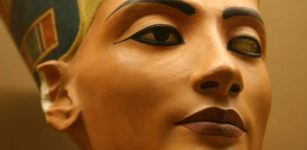 Nefertiti Was A Powerful Queen But Never A Pharaoh – Researcher Says
Archaeology | Jan 23, 2018
Nefertiti Was A Powerful Queen But Never A Pharaoh – Researcher Says
Archaeology | Jan 23, 2018 -
 Mystery Of A 5,000-Year-Old Mass Grave In Poland Reveals A Family Tragedy
Archaeology | May 14, 2019
Mystery Of A 5,000-Year-Old Mass Grave In Poland Reveals A Family Tragedy
Archaeology | May 14, 2019 -
 Face Of Norwegian Boy Who Lived 8,000 Years Ago Reconstructed
Archaeology | Mar 16, 2023
Face Of Norwegian Boy Who Lived 8,000 Years Ago Reconstructed
Archaeology | Mar 16, 2023 -
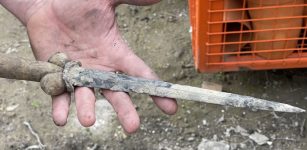 Medieval Bollock Dagger – Also Known As Kidney Dagger Discovered In Belgium
Archaeology | Mar 30, 2022
Medieval Bollock Dagger – Also Known As Kidney Dagger Discovered In Belgium
Archaeology | Mar 30, 2022 -
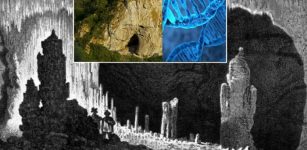 Neanderthals’ History Retrieved From Cave Sediments In Siberia And Spain – New Method
Archaeology | Apr 19, 2021
Neanderthals’ History Retrieved From Cave Sediments In Siberia And Spain – New Method
Archaeology | Apr 19, 2021 -
 Scientists Attempt To Solve An Ancient Greek Volcano Mystery
Archaeology | Sep 20, 2022
Scientists Attempt To Solve An Ancient Greek Volcano Mystery
Archaeology | Sep 20, 2022 -
 On This Day In History: Ceres Discovered By Giuseppe Piazzi – On Jan 1, 1801
News | Jan 1, 2017
On This Day In History: Ceres Discovered By Giuseppe Piazzi – On Jan 1, 1801
News | Jan 1, 2017 -
 4,500-Year-Old Ramp Might Explain How Huge Stones Were Transported To Great Pyramids’ Building Site
Archaeology | Nov 9, 2018
4,500-Year-Old Ramp Might Explain How Huge Stones Were Transported To Great Pyramids’ Building Site
Archaeology | Nov 9, 2018 -
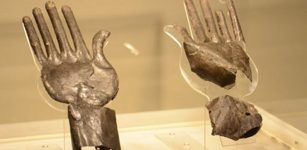 Mystery Of The Silver Hands Discovered In An Etruscan Tomb Full Of Secrets
Artifacts | Jun 12, 2015
Mystery Of The Silver Hands Discovered In An Etruscan Tomb Full Of Secrets
Artifacts | Jun 12, 2015




